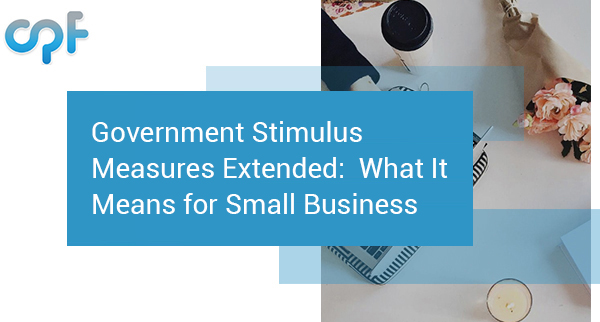Small and medium enterprises (SME’s) are facing a new wave of uncertainty as they grapple with the economic realities of Victoria’s outbreak and policy response. As the impact of COVID-19 drags on, almost everyone is feeling fatigued. The business community must persevere, pivot and adapt to a new environment, taking meaningful lessons along the way that are sure to serve us for the rest of our careers. Nonetheless, many smaller businesses are facing a challenging situation. Small businesses with significant exposure to the Victorian economy or interstate (or international) travellers are at their last straw.
The Government’s stimulus-response was initially designed to be in place for a period of six months. It has now been significantly extended into 2021 in response to the latest development and views of the business community. At the end of September, JobSeeker and JobKeeper payments remain available, yet will be reduced significantly. The Government SME Loan Guarantee Scheme 2.0 is in the works and will be available to businesses soon. What will these changes mean for your small business?
JobKeeper and JobSeeker
A few weeks ago, the Government announced that JobKeeper payments would be extended for another six months. The extension is costed until the end of March 2021, and hopefully, by then the ability of the economy to support jobs will allow the measure to be eliminated. From the 28th of September, you will receive $1,200 per eligible employee, phased down to $1,000 from January 4th, 2021. If the employee works less than twenty hours a week, the payment is instead $750 and $650, respectively. You will also need to reapply for eligibility as a business. The eligibility requirements are now based on September quarter 2020 vs the same period in 2019, with a decline of 30 percent of turnover needing to be demonstrated. It’s possible your business now qualifies, even if you didn’t for the first iteration. This is welcome news to many struggling small businesses as it gives clarity and certainty that they can afford to retain staff over the coming months.
JobSeeker also faces a similar fate, with payments slashed from $1115 to $815 a fortnight from September 25. The impact on small business is varied. If you offer goods or services that recipients have been spending their extra payments on, this may hit your topline. However, a reduction in the unemployment benefit ‘JobSeeker’ may somewhat ironically, encourage more people to seek jobs – particularly casual roles offered by small businesses bouncing back from their lows.
SME Loan Guarantee Scheme
The SME Loan Guarantee Scheme was implemented by the government to encourage lenders to support businesses in need of working capital. Under the Scheme, the government is guaranteeing half of the loans issued by eligible lenders to SMEs. While appealing on paper, recent reports have suggested that small businesses are not finding it as attractive as many might have expected.
“Businesses are hesitant to take on any additional debt in case things turn even further south.”
Of the $40 billion provided under the Scheme, only $1.7 billion of loans had actually been approved. Kate Carnell, of the Australian Small Business Ombudsman, suggested that the reason is that loans are still subject to bank credit assessment processes. Understandably, banks are reluctant to lend to small businesses with falling revenues. Furthermore, with changes to JobKeeper and JobSeeker (among other measures), businesses are hesitant to take on any additional debt in case things turn even further south.
In response to these concerns, the government has made multiple changes that will take effect from October 1. These changes will likely make a substantial difference to businesses looking to secure additional funding by making loans far more appealing. These changes include:
- An increase in the maximum loan size to $1 million (from $250k).
- Loans can be for up to 5 years (from 3).
- Loans can be secured (by assets other than property).
- Funds can be used for a broader range of purposes.
Consider other financing options
If your small business is facing financial pressure or merely looking for other funding alternatives, there are plenty of alternatives. Start by managing your existing debts before taking on new loans. Debt consolidation and refinancing may offer you a reduced interest rate and a longer repayment period. If your current loan repayments include both a principal and interest component, discuss with your lender the possibility of switching to interest-only, even for a few months. If you need additional working capital, consider a debtor finance facility. Debtor finance is a flexible solution that allows your small business to access funds secured by your accounts receivable ledger (unpaid invoices).
Regardless of your situation, consulting an expert is always a great first move. Business finance brokers use their experience and industry knowledge to source the best deal for your small business’s unique situation. Capital Plus Finance is an experienced invoice finance broker that has your best interests at heart. The team at Capital Plus Finance will do everything we can to help you secure a suitable finance solution for your small business. Please give us a call anytime to find out more or to have an obligation-free chat about your business’s funding situation.





